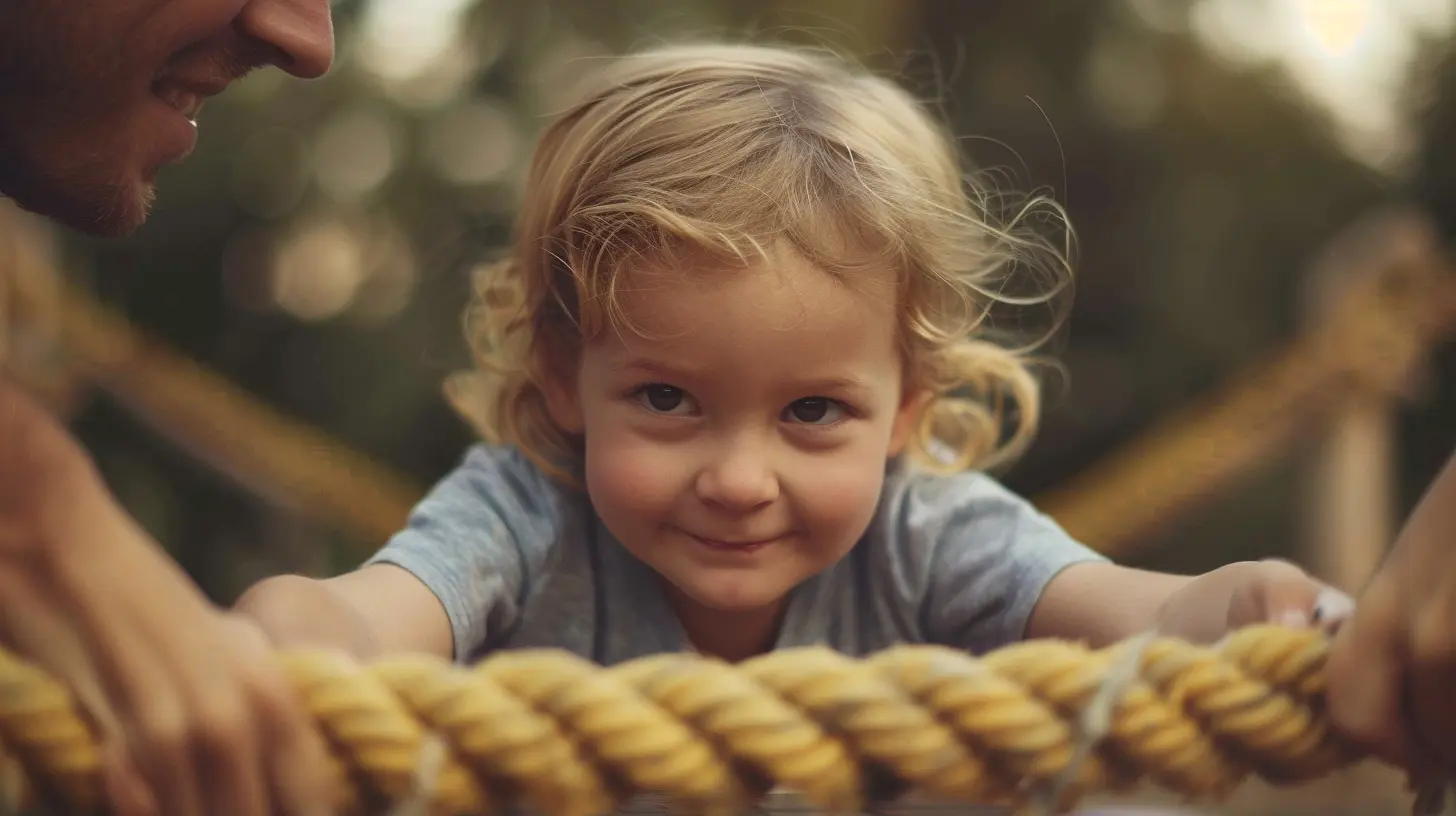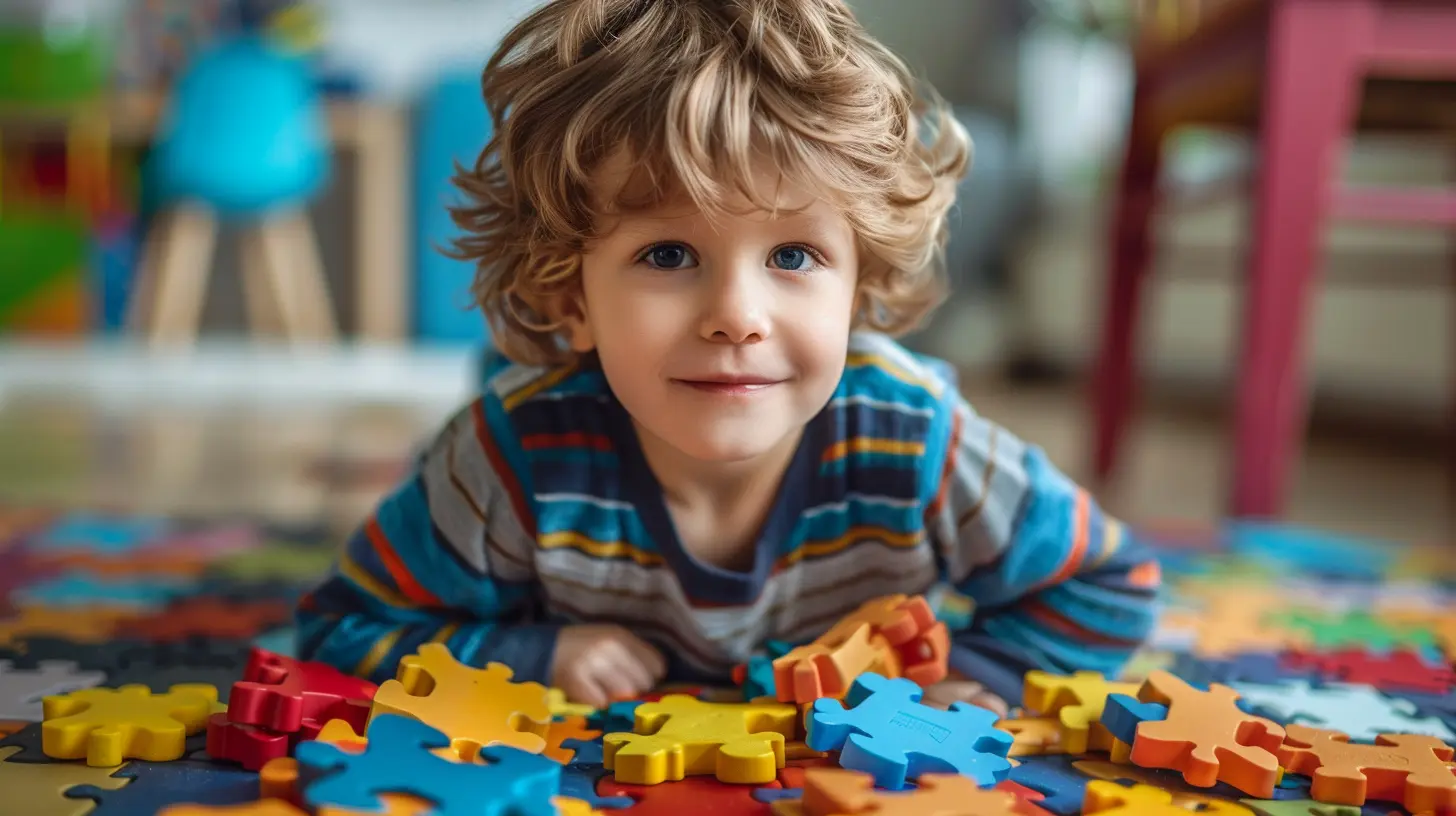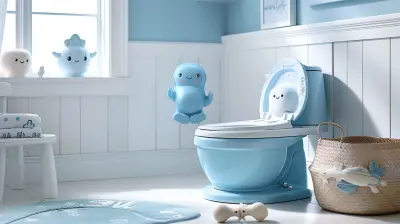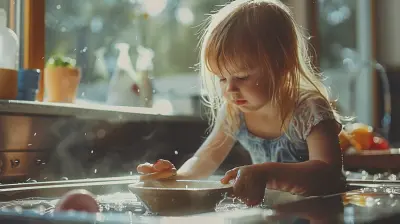How to Involve Your Child in Problem-Solving Their Own Misbehavior
26 October 2025
Let’s face it—parenting isn’t all sunshine, Instagram-worthy crafts, and homemade banana muffins. Sometimes, it's spilled juice again, a full-blown meltdown in Target, and your little angel testing the very limits of your patience (and possibly gravity).
But here’s a twist: what if instead of always being the “enforcer,” we invited our kids into the process of fixing their own slip-ups? Sounds wild, right? But it’s not only possible—it’s surprisingly effective. So grab your coffee (it’s okay if it's reheated three times) and let’s dive into how to involve your child in problem-solving their own misbehavior.
Why Problem-Solving Together Works (and Isn’t Just Woo-Woo Parenting Stuff)
Imagine your boss yelling at you every time you made a mistake without any chance to explain or fix it. Oof. Not great, huh? Kids feel the same way when they’re constantly told what they did wrong but never given the tools or ownership to make it right.Teaching kids to problem-solve their own misbehavior:
- Builds self-awareness (they start seeing what went wrong)
- Encourages responsibility (no more finger-pointing)
- Boosts their confidence (they’re like tiny CEOs of their emotions)
- Makes discipline less of a power struggle (goodbye, stand-offs)
It’s not about being a permissive pushover—it’s about being a guide, a coach, a "let's figure this out together" kind of parent.
Step 1: Stay Calm, Even If Your Inner Volcano Is Bubbling
First things first: nothing constructive happens in chaos. If your kid just tossed their lunch at the wall and you feel your blood pressure soaring, it’s okay to take a beat.Remember this golden rule: connection before correction.
You can’t involve your child in solving anything if they feel attacked or scared. So before diving into any conversation, make sure both of you are cool cucumbers. Take deep breaths, count to ten, sing the chorus of your favorite 90s pop song in your head—whatever works.
Step 2: Get Curious, Not Furious
Once you’re both calm-ish (let’s be real, we’re not expecting miracles), start with curiosity.Instead of launching into the classic:
“What were you thinking?!”
Try something like:
“Hmm… I noticed you threw your toy at your sister. What was going on in your head at that moment?”
See the difference? You’re opening the door for a conversation, not slamming it with blame.
Kids often misbehave because they don’t know how to handle big feelings. By getting curious, you help them explore the why behind the behavior. Sometimes the answer is surprising—maybe they're tired, hungry, overwhelmed, or just testing boundaries.
Step 3: Reflect Back (Like a Super Chill Mirror)
Kids don’t always have the language to explain themselves, so help them out by reflecting what you hear.Child: “She took my crayon and wouldn’t give it back!”
You: “Ah, so you felt angry because you thought she was being unfair?”
Reflecting gives them the words to label emotions, which is like giving them a flashlight in a dark cave. Suddenly they’re not blindly reacting—they’re understanding.
Step 4: Ask the Million-Dollar Question — “What Can We Do About It?”
Now comes the magic moment. It’s time to put the ball in their court.This question—“What can we do about it?”—invites your kid to think, brainstorm, and take part in finding a solution. And trust me, their answers will surprise you.
Sometimes they’ll say something silly like, “I’ll make her a crayon hat.” Other times, they’ll say things that show serious maturity: “Maybe I can ask before taking something next time.”
✨ Pro Tip: Even if their first ideas are a little out there (like sending the crayon to time-out), validate the effort first, then guide toward a more reasonable solution.
Step 5: Brainstorm Together—No Idea Is Too Weird (Seriously)
Get your silly hats on and brainstorm together. Ask:- What can we do differently next time?
- How can we fix what happened?
- What would help you make a better choice?
Write down every idea, even the bonkers ones. This not only makes your kid feel heard, but also shows that thinking through problems is creative and collaborative.
And yes—sometimes “Problem-Solving Time” looks like a giggle-fest. That’s okay. Laughter is the glue that holds cooperation together.
Step 6: Agree on a Plan (Keep It Doable and Clear)
Once you've got a few solid ideas, help your child pick one they can actually do. No, they're not going to write a 5-paragraph apology letter in calligraphy. Let’s keep it age-appropriate and realistic.Examples:
- If they hit a friend: Make a simple apology and take a break from rough play.
- If they ignored you at bedtime: Try setting a fun timer together for tomorrow night.
Make the plan something that empowers, not punishes. The goal isn’t shame—it’s growth.
Step 7: Circle Back Later (Because Growth = Repetition)
One convo won’t fix every hiccup. That’s okay. Circle back later—like at bedtime or during a chill moment—and say, “Hey, remember when we talked about what happened earlier? How do you think that went?”It’s like watching the instant replay of a game. You’re helping them see patterns, progress, and places to improve.
Consistency builds muscle memory—and yes, that includes the “how-not-to-throw-my-shoe-at-my-brother” muscle.
Common Parenting Curveballs (and How to Dodge 'Em)
🎯 What if my kid just shrugs and says “I don’t know”?
Totally normal. You can say:“Okay, it’s hard to think of a solution right now. Let’s sit together and come up with ideas. Want to play a ‘what if’ game?”
🌀 What if they refuse to talk at all?
Sometimes emotions are just too big. It’s okay to press pause and revisit later. Say:“I see you're upset. I'm here when you're ready to talk and figure this out together.”
⚡ What if their idea of resolving it is... bonkers?
Let them dream big, but gently redirect.“That’s an interesting idea! Hmm, what’s something we could actually try today?”
Making Problem Solving a Family Habit
This isn’t a once-in-a-blue-moon strategy. Make it a family habit! Talk about your own mistakes and how you solve them:- “Oops, I burned dinner. What can I do? Let’s order pizza and I’ll try a new recipe next time.”
- “I forgot to return the library books! What’s my plan? I’ll set a reminder on my phone.”
Kids learn so much from watching you own your mess-ups in a non-shamey way.
You’re modeling resilience. Confidence. Creativity. And that’s way more valuable than a perfect parenting track record.
When All Else Fails, Remember This…
No child (or adult) acts perfectly all the time. Behavior is communication. When kids act up, they’re telling you something—even if it’s in shouting or door-slamming.Inviting your child into problem-solving teaches them that:
- Mistakes are okay
- Every problem has a solution
- They are capable of change
And yeah, that takes time. Sometimes it’s two steps forward, one step back... one cartwheel sideways... and maybe a pancake on the ceiling. But it’s progress.
Think of it like helping them build their own GPS for life—one that recalculates, reroutes, and always finds a better path.
Final Thoughts: You’ve Got This
Involving your kid in solving their own misbehavior isn’t about being “easy.” It’s about being effective. It’s about teaching real-life skills with compassion and consistency. You're raising a human who knows how to think, reflect, and act—and that’s pretty amazing.Truth be told? You’ll both grow in the process. And maybe, just maybe, the next meltdown will end with a plan instead of a power struggle.
Want to try this tomorrow? Just start with one moment. One conversation. One “Hey, what should we do about that?” You might be surprised how capable your kid really is.
all images in this post were generated using AI tools
Category:
Discipline TechniquesAuthor:

Austin Wilcox
Discussion
rate this article
1 comments
Aris Barker
Love this approach! Involving kids in problem-solving not only empowers them but also strengthens the parent-child bond. It's amazing how much they can learn when we guide them!
November 3, 2025 at 4:13 AM

Austin Wilcox
Thank you! I'm glad you resonate with this approach—empowering kids truly transforms both their learning and our relationships with them.


